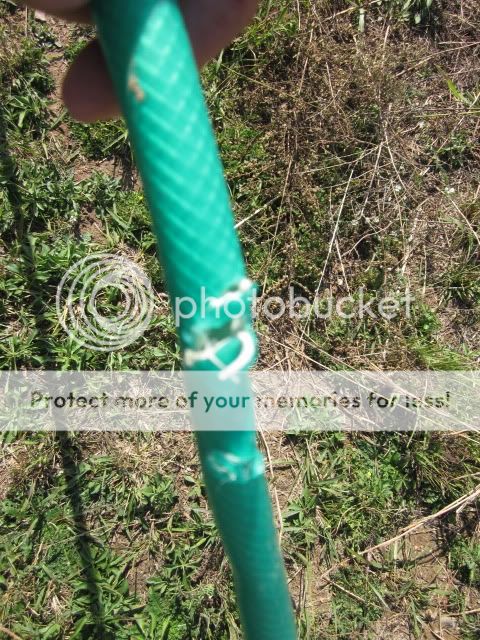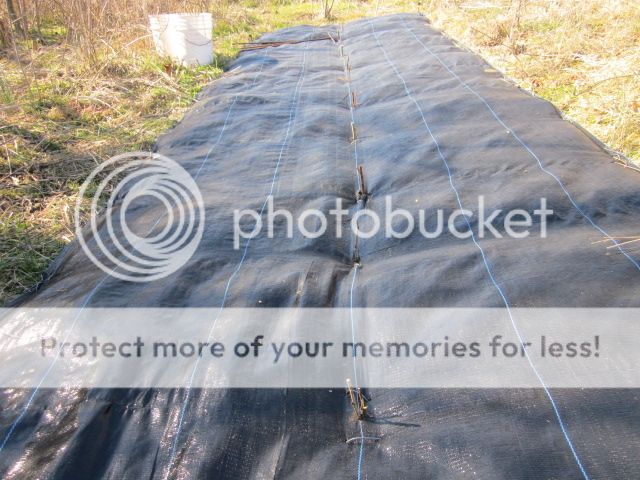-
The forum has been upgraded to support both light and dark themes. Click here for directions.
You are using an out of date browser. It may not display this or other websites correctly.
You should upgrade or use an alternative browser.
You should upgrade or use an alternative browser.
The Brushpile
- Thread starter Brushpile
- Start date
During the Winter months I grew seedlings in the basement. These were the first primitive attempts to grow seedlings before people like wbpdeer turned growing seedlings into a science. The advantage of growing seedlings is that I could grow hybrids and rare trees that aren't commonly available. The basement has since been finished, so I lost my nursery.


wbpdeer
Well-Known Member
During the Winter months I grew seedlings in the basement. These were the first primitive attempts to grow seedlings before people like wbpdeer turned growing seedlings into a science. The advantage of growing seedlings is that I could grow hybrids and rare trees that aren't commonly available. The basement has since been finished, so I lost my nursery.

Thanks Brush for a mention but there are many indoor growers on this forum - some of them are Chinese Chestnut growers.
That is a topnotch photo.
Here I used milk jugs in an attempt to create a greenhouse effect. Pear cuttings were successfully rooted, but my success was only about 25%. Where transpiration can be controlled, apple and pear can be rooted. The drawback to this method is that it produces a standard tree that will take about 8 years to bear fruit.


Last edited:
This was back in the day when the learning curve was straight up! In this pic I have lighting, that I didn't have the previous year. We didn't know what soil to use, how much and how often to water, and if we got lucky chestnuts sprouted. I was among the best growers at the time. LOLThanks Brush for a mention but there are many indoor growers on this forum - some of them are Chinese Chestnut growers.
That is a topnotch photo.
Tenured Student
Active Member
Brush pile- I'm looking forward to tagging along. Glad you came over
I was chasing my tail weed whacking and watering, until I started using Lumite. Lumite is a weed barrier and also a moisture barrier. Even in the worst drought conditions trees survived when they were planted in Lumite with occasional watering. Here Lumite is being rolled out over the top of Johnson Grass, in preparation for planting Hybrid Poplar Cuttings to shade out Johnson Grass.


The bucket contains Hybrid Poplar (HP) cuttings, and across the top of the bucket are Silky Dogwood and Ninebark branches that were made into hardwood cuttings and planted with the HP. These cuttings were harvested from my own plantings. Planting a small nursery provides free cuttings for future plantings.


The staple that's next to the cutting is very important for several reasons.
1. It folds the fabric in place so that the fabric doesn't rise up over the cutting.
2. Moisture is constantly evaporating from deep down in the soil, and it collects on the bottom of the fabric like a solar still, and gravitates toward the cutting.
3. Rain and morning dew will funnel toward the staple.

1. It folds the fabric in place so that the fabric doesn't rise up over the cutting.
2. Moisture is constantly evaporating from deep down in the soil, and it collects on the bottom of the fabric like a solar still, and gravitates toward the cutting.
3. Rain and morning dew will funnel toward the staple.

Ninebark in Lumite. Hardwood cuttings are harvested prior to bud break. Cuttings are about the size of a pencil, and 100s of then can be harvested in minutes. They are planted so that at least one bud is above ground and 2/3rds of the cutting are in the ground. Not every tree will grow from hardwood cuttings, but here's a partial list of those that will: All the Dogwoods with the exception of Flowering dogwood, Willows, Hybrid Poplar, Elderberry, Ninebark, Highbush Cranberry...


Next I'll discuss brush. Identifying each plant that will grow from cuttings is important, because why buy expensive cuttings when you can make your own and the supply is unlimited?
This is Red Osier Dogwood (ROD). ROD likes moist soil, and is thicket forming. When I hunted in WI, the hunters called it "Red brush". I belonged to a bow club and our best drives were through ROD thickets because it's thicket forming providing cover, bedding and food. ROD grows from cuttings. Know this bush and gather 100s, even 1000s of cuttings FREE!
ROD is redder and more upright than Silky Dogwood.

This is Red Osier Dogwood (ROD). ROD likes moist soil, and is thicket forming. When I hunted in WI, the hunters called it "Red brush". I belonged to a bow club and our best drives were through ROD thickets because it's thicket forming providing cover, bedding and food. ROD grows from cuttings. Know this bush and gather 100s, even 1000s of cuttings FREE!
ROD is redder and more upright than Silky Dogwood.

Last edited:
ROD is a common shrub and it ranges throughout much of the Whitetail's range.
http://plants.usda.gov/core/profile?symbol=COSE16
http://plants.usda.gov/core/profile?symbol=COSE16








